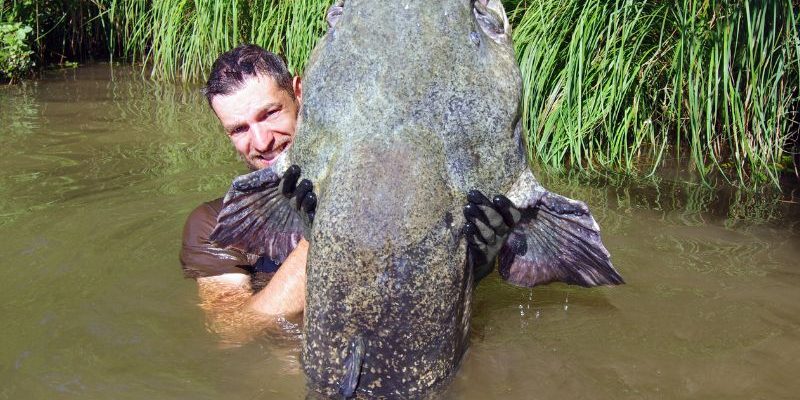Have you ever heard of “noodling” or “hand fishing”? It’s one of the more unusual and somewhat intimidating methods of fishing.
Noodling is a classic hand-fishing method that originated in South America. For instance, feeling around in murky water to locate the fish’s hiding place and then pulling it out with bare hands.
But how did noodling start, and what makes this daring practice unique? Let’s dive into its history, cultural significance, and what noodling looks like in the U.S. today.
The Origins of Noodling
Noodling dates back to Indigenous North American communities as a practical hand-fishing method for catfish, requiring no rods or nets. Over time, it became a hallmark of rural Southern culture, passed down through generations.
Essentially, it was used for sustenance, relying on skill, courage, and a deep understanding of catfish behavior and their hideouts.

The Technique of Noodling
Unlike traditional fishing, noodling doesn’t involve bait or a fishing pole. Here’s how it works: an angler wades into shallow waters, usually in rivers or lakes known for catfish, and feels around with their hands for underwater crevices or holes.
Once they locate a hiding spot, they reach inside, hoping to grab onto a catfish and wrestle it to the surface.
Catfish are cavity nesters, meaning they hide in dark, enclosed spaces during spawning season. This habit makes them easier to find in shallow, muddy waters.
However, the challenge lies in the catfish’s instinct to bite down hard on anything that invades its space—including the angler’s hand. Noodlers wear the bite as a badge of honor, braving the pain and mud to land their prize.

The Risks and Thrills of Noodling
Noodling is not for the faint-hearted. Anglers face risks from powerful catfish, snapping turtles, water snakes, and even alligators in some Southern states. Navigating murky waters requires a deep understanding of the local ecosystem. Despite the dangers, enthusiasts are drawn to the adrenaline rush and the challenge of relying on skill rather than equipment, likening it to hunting.

The Modern Noodling Scene
Today, noodling has transitioned from a survival skill to a celebrated tradition in Southern states like Oklahoma, Texas, and Arkansas. In Oklahoma, annual noodling competitions attract anglers nationwide, competing in categories like the biggest fish or fastest catch.
However, noodling remains controversial, with conservationists concerned about its impact on fish populations, especially during spawning season. Removing catfish from nests can harm future stocks, leading some states, like Illinois and Missouri, to ban the practice to protect fish habitats.
The Cultural Legacy of Noodling
Noodling is more than just a sport; it represents a slice of Southern heritage, symbolizing the resourcefulness, grit, and connection to the natural environment that characterize the region. To many, it’s a bonding experience that connects them to their ancestors and to the rivers and lakes they grew up near.

Noodling gained national attention with shows like Hillbilly Handfishin’, where novices learned from seasoned experts. While the media spotlighted the practice, it remains a proud Southern tradition passed down through families and local gatherings.
Final Thoughts on Noodling
Noodling may be a peculiar way to catch a fish, but it embodies the unique relationship between humans and the environment that has shaped countless fishing traditions around the world.
But for anyone considering a go at noodling, remember—it’s not just about catching a catfish; it’s about stepping into a longstanding tradition of patience, bravery, and skill.

Ready to identify your next big catch? Dive into your next fishing adventure with confidence—download FishVerify now! Instantly identify fish species, check local regulations, and enhance your fishing experience with the latest tools.


